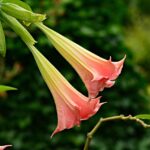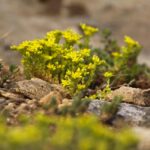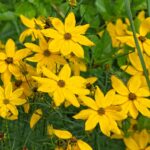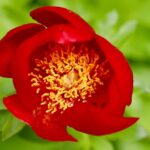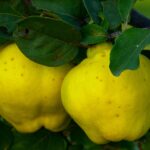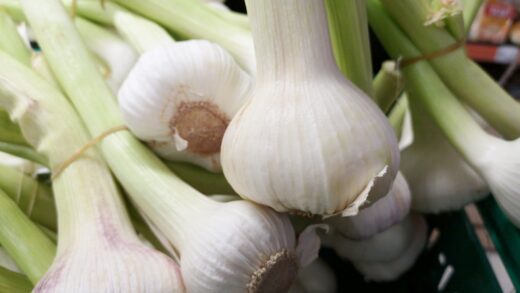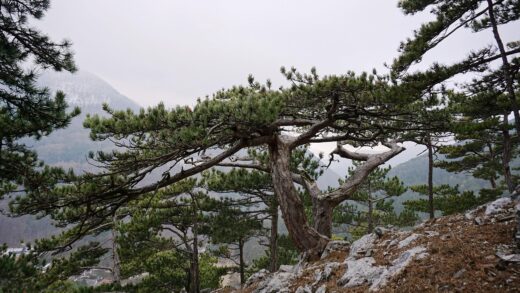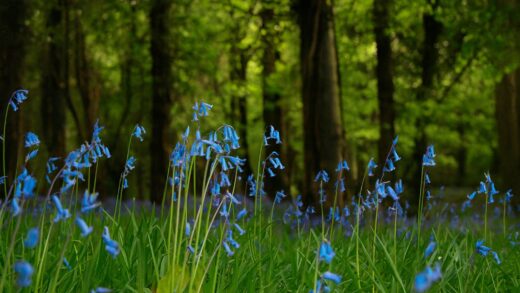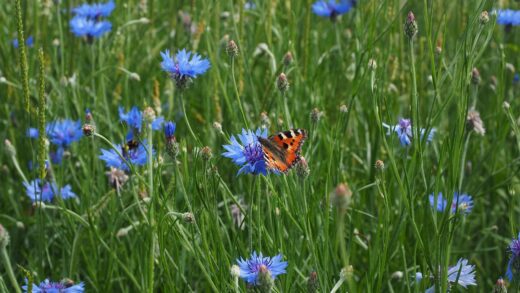One of the most compelling reasons for including the Japanese plum yew in a landscape design is its exceptional resistance to a wide array of diseases and pests. This tough, resilient evergreen is rarely troubled by the issues that commonly plague other conifers and shrubs, making it a truly low-maintenance and reliable choice for gardeners. While it is not completely immune to problems, the issues that do arise are infrequent and are most often linked to cultural practices, particularly poor soil drainage, rather than a susceptibility to pathogens or insects. Understanding these few potential problems and how to prevent them through proper care is the key to ensuring this plant remains a healthy, trouble-free feature in the garden for decades.
Fungal issues and root rot prevention
The most significant threat to the health of a Japanese plum yew is not an insect or a blight, but rather fungal root rot caused by waterlogged soil. This plant is extremely intolerant of poor drainage, and when its roots are forced to sit in saturated, oxygen-deprived soil, they become vulnerable to attack by water molds such as Phytophthora. The infection begins in the roots, causing them to turn dark and mushy, and destroys their ability to absorb water and nutrients. This leads to symptoms in the upper part of the plant, including yellowing foliage, wilting, branch dieback, and eventual plant death.
Prevention is the only effective strategy for managing root rot, as the condition is nearly impossible to cure once it has taken a firm hold. The entire prevention strategy hinges on providing the plant with excellent drainage from the very beginning. This starts with selecting a planting site that does not collect water and is not situated in heavy, compacted clay soil. Before planting, it is essential to amend the soil with copious amounts of organic matter like compost or pine bark fines to improve its structure and porosity, allowing excess water to drain away freely.
For established plants, maintaining good drainage is an ongoing consideration. Avoid overwatering, and always check the soil moisture before adding more water. Ensure that irrigation systems or downspouts are not consistently saturating the area around the plant’s root zone. It is also important to maintain a proper layer of mulch, but be careful not to pile it up against the main stem, as this can trap moisture and create a favorable environment for crown rot, a related fungal issue that attacks the plant at the soil line.
If you suspect root rot due to wilting and yellowing foliage in moist soil, you can gently excavate some soil around the base of the plant to inspect the roots. Healthy roots should be firm and whitish, while diseased roots will be brown, soft, and may have a foul odor. If only a portion of the root system is affected, you may be able to save the plant by improving drainage, reducing irrigation, and applying a fungicide specifically labeled for soil-borne pathogens. However, in most cases, the prognosis is poor, underscoring the absolute necessity of preventative measures.
More articles on this topic
Identifying and managing common scale insects
While the Japanese plum yew is highly pest-resistant, it can occasionally be host to certain types of scale insects. Scale are small, immobile pests that attach themselves to the stems and undersides of the needles, protecting themselves with a waxy, shell-like covering. They feed by sucking the sap from the plant, and a heavy infestation can lead to yellowing foliage, reduced vigor, and branch dieback. The presence of a sticky substance called honeydew on the needles, which may in turn be covered by a black, sooty mold, is also a common sign of a scale infestation.
There are several types of scale that might be found, but careful inspection is the key to early detection. Regularly examine the stems and the lower surface of the needles for the small, round or oyster-shell shaped bumps characteristic of scale. They can be difficult to spot as they are often well-camouflaged. Catching an infestation early, when the population is small, makes management much simpler and more effective. A small, localized population can sometimes be controlled by simply scraping the insects off with a thumbnail or a soft brush.
For more widespread infestations, horticultural oil is one of the most effective and environmentally friendly control methods. Applying a dormant oil in the late winter or early spring, before new growth begins, can smother the overwintering adult scales. During the growing season, a lighter-weight summer or superior oil can be used to target the vulnerable “crawler” stage of the scale life cycle, which is when the newly hatched, mobile insects are searching for a place to attach and feed. It is crucial to coat all surfaces of the plant thoroughly for the oil to be effective.
When using any treatment, including horticultural oils or insecticidal soaps, it is vital to read and follow the label instructions carefully to avoid damaging the plant. Apply treatments on a calm, overcast day when temperatures are mild to prevent leaf scorch. Chemical insecticides are also available but should be considered a last resort, as they can harm beneficial insects that may be helping to control the scale population naturally. Maintaining a healthy, vigorous plant through proper cultural care is also a key part of pest management, as stressed plants are always more attractive to pests.
More articles on this topic
Addressing less common pests
Although a rare occurrence, other pests may occasionally trouble the Japanese plum yew, particularly if the plant is stressed or weakened. Spider mites are tiny, sap-sucking arachnids that can be a problem in hot, dry conditions. They are difficult to see with the naked eye, but their presence is often indicated by a fine webbing on the needles and a stippled, faded appearance of the foliage. A strong jet of water from a hose can often be enough to dislodge and disrupt a small spider mite population, and insecticidal soaps or horticultural oils are effective against heavier infestations.
Nematodes, specifically root-knot nematodes, are microscopic roundworms that live in the soil and feed on plant roots. An infestation can cause the roots to form galls or knots, which impairs their function and leads to stunted growth, yellowing, and a general decline in the plant’s health. Nematode problems are more common in sandy soils in warmer climates. Management is difficult and focuses on prevention by enriching the soil with a large amount of organic matter, which encourages beneficial fungi that can trap and consume harmful nematodes.
Vine weevils are another pest that can occasionally cause damage. The adult weevils are beetles that feed on the foliage at night, creating characteristic notches along the edges of the needles. While this leaf damage is mostly cosmetic, the more serious damage is caused by their C-shaped, grub-like larvae, which live in the soil and feed on the roots and the bark at the base of the stem. A severe infestation of the larvae can girdle and kill the plant. Biological controls, such as beneficial nematodes that specifically target the larvae, can be an effective management strategy when applied to the soil.
In general, the best defense against these less common pests is to maintain a healthy and vigorous plant. A Japanese plum yew that is correctly sited in well-drained soil, properly watered, and not under stress is far less likely to attract pests and is much more capable of withstanding any minor damage that might occur. Regular monitoring and promoting a healthy garden ecosystem with a diversity of plants will also encourage beneficial predatory insects that can help keep pest populations in check naturally.
The impact of environmental stress on plant health
Often, what appears to be a disease or pest problem on a Japanese plum yew is actually a physiological response to environmental stress. The plant’s health is directly tied to its growing conditions, and an unsuitable environment can produce symptoms that mimic those of a pathogenic disease. For example, foliage that is uniformly yellow or scorched brown is frequently caused by too much direct sun exposure rather than a fungal blight. Siting the plant in its preferred partial to full shade is the only remedy for this type of stress.
Winter damage is another common form of environmental stress. Winter burn occurs when the foliage loses moisture to cold, dry winds faster than the frozen roots can replace it, resulting in brown, desiccated needles, particularly on the windward side of the plant. This is not a disease and can be prevented by ensuring the plant is well-watered in the autumn before the ground freezes and by providing a windbreak for exposed specimens. Similarly, heavy snow or ice can cause branches to break, which, while damaging, is a mechanical injury, not a disease.
Nutrient deficiencies or toxicities can also manifest as disease-like symptoms. As previously discussed, yellowing between the needle veins (interveinal chlorosis) can indicate an iron deficiency, often caused by a soil pH that is too high (alkaline). Conversely, the improper application of fertilizers or exposure to de-icing salts can cause chemical burns to the roots and foliage, resulting in brown, dead patches on the needles or along their margins. These issues are resolved by correcting the underlying soil problem, not by applying fungicides or pesticides.
Ultimately, a proactive approach that focuses on creating the ideal growing environment is the most effective way to prevent health problems. A stressed plant, whether from improper light, water, or soil conditions, has a compromised immune system and is inherently more vulnerable to the few pests and diseases that can affect it. By meeting the plant’s fundamental cultural needs, you are practicing the most effective form of integrated pest and disease management, ensuring your Japanese plum yew remains robust and beautiful.
Integrated pest management strategies
Integrated Pest Management (IPM) is a holistic and environmentally sensitive approach to managing pests and diseases that is perfectly suited for a resilient plant like the Japanese plum yew. The foundation of IPM is prevention, which emphasizes creating a healthy growing environment that minimizes the likelihood of problems occurring in the first place. This includes proper site selection (shade and wind protection), ensuring excellent soil drainage, watering correctly, and avoiding unnecessary stress on the plant. A healthy plant is the first and best line of defense.
The second tier of IPM is regular monitoring and correct identification. Make it a habit to inspect your plants regularly for any early signs of trouble. Look under leaves, along stems, and at the overall condition of the plant. If you find a potential pest or a suspicious-looking spot, it is crucial to accurately identify it before taking any action. What might look like a harmful insect could be a beneficial predator, and what appears to be a fungal spot could be a sign of minor environmental stress. Accurate identification ensures that any control measures taken are appropriate and necessary.
If a problem is identified and action is required, IPM prioritizes the use of non-chemical control methods first. This could include mechanical controls, such as hand-picking pests or pruning out an affected branch. It could also involve biological controls, such as encouraging natural predators like ladybugs and lacewings, or introducing beneficial nematodes to control soil-dwelling larvae. Cultural controls, like adjusting your watering schedule or improving air circulation by thinning nearby plants, are also key non-chemical strategies.
The use of pesticides, even organic ones like horticultural oil or insecticidal soap, is considered a final resort in an IPM program and is used only when monitoring indicates that the problem is reaching a damaging threshold. The least toxic pesticide that is most specific to the target pest should be chosen to minimize harm to non-target organisms and the wider environment. For a plant as naturally resistant as the Japanese plum yew, resorting to chemical controls should be a very rare event, as most issues can be prevented or managed through sound cultural practices.
📷: A. Barra, CC BY-SA 4.0, via Wikimedia Commons










